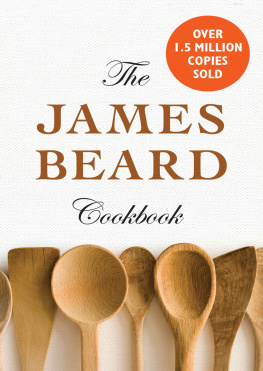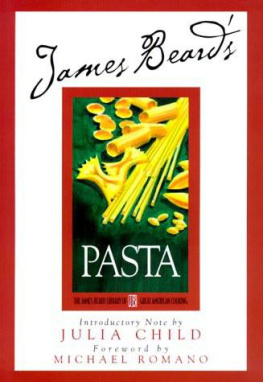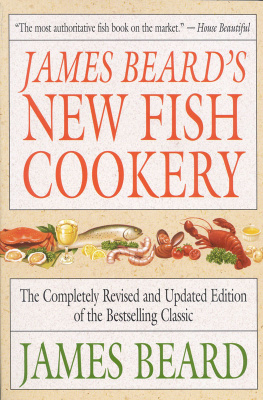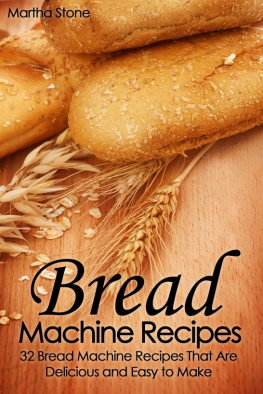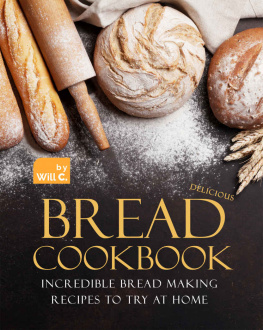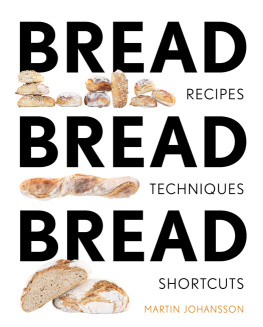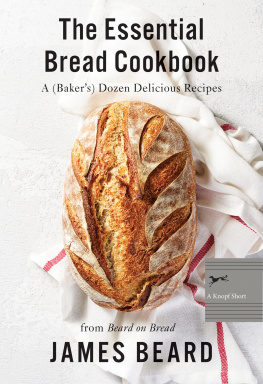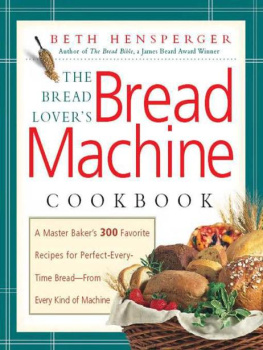James Beard - Beard On Bread
Here you can read online James Beard - Beard On Bread full text of the book (entire story) in english for free. Download pdf and epub, get meaning, cover and reviews about this ebook. year: 1995, publisher: Knopf, genre: Home and family. Description of the work, (preface) as well as reviews are available. Best literature library LitArk.com created for fans of good reading and offers a wide selection of genres:
Romance novel
Science fiction
Adventure
Detective
Science
History
Home and family
Prose
Art
Politics
Computer
Non-fiction
Religion
Business
Children
Humor
Choose a favorite category and find really read worthwhile books. Enjoy immersion in the world of imagination, feel the emotions of the characters or learn something new for yourself, make an fascinating discovery.

- Book:Beard On Bread
- Author:
- Publisher:Knopf
- Genre:
- Year:1995
- Rating:4 / 5
- Favourites:Add to favourites
- Your mark:
- 80
- 1
- 2
- 3
- 4
- 5
Beard On Bread: summary, description and annotation
We offer to read an annotation, description, summary or preface (depends on what the author of the book "Beard On Bread" wrote himself). If you haven't found the necessary information about the book — write in the comments, we will try to find it.
Beard On Bread — read online for free the complete book (whole text) full work
Below is the text of the book, divided by pages. System saving the place of the last page read, allows you to conveniently read the book "Beard On Bread" online for free, without having to search again every time where you left off. Put a bookmark, and you can go to the page where you finished reading at any time.
Font size:
Interval:
Bookmark:
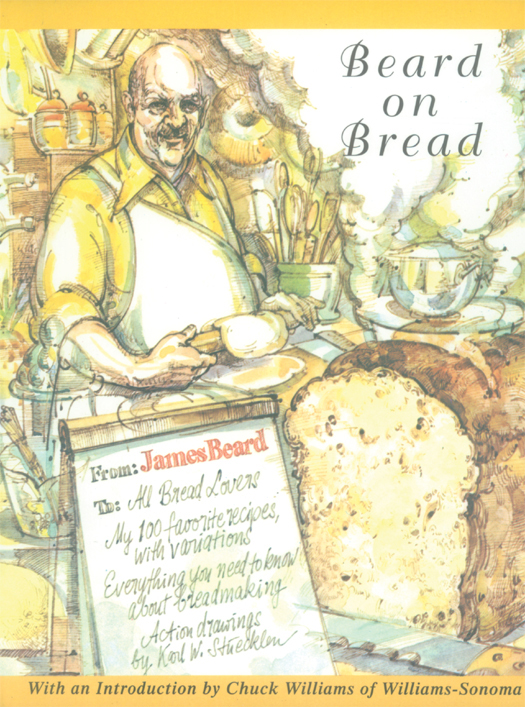
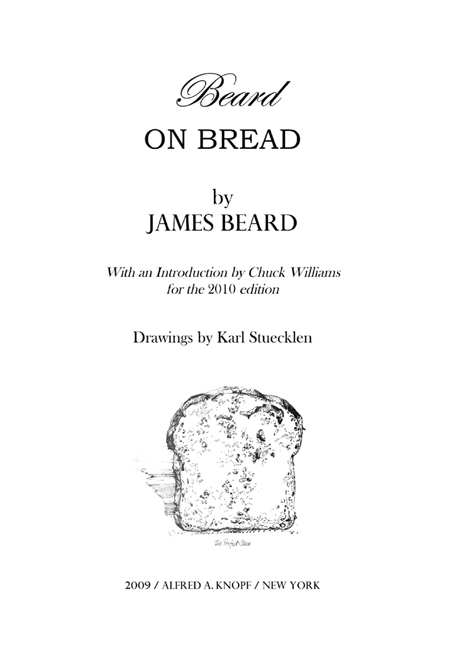

This Is a Borzoi Book
Published by Alfred A. Knopf, Inc.
Copyright 1973 by James A. Beard
Introduction copyright 1995 by Chuck Williams
All rights reserved under International and Pan-American Copyright Conventions. Published in the United States by Alfred A. Knopf, Inc., New York, and simultaneously in Canada by Random House of Canada Limited, Toronto. Distributed by Random House, Inc., New York.
Grateful acknowledgment is made to the following for permission to reprint previously published material:
Atheneum Publishers and George Lang: Recipe for George Langs Potato Bread with Caraway Seeds from The Cuisine of Hungary, by George Lang. Copyright 1971 by George Lang.
Alfred A. Knopf, Inc.: Recipe for Jane Grigsons Walnut Bread from Southern Burgundy from Good Things, by Jane Grigson. Copyright 1968, 1969, 1970, 1971, by Jane Grigson. Copyright 1971 by Alfred A. Knopf, Inc.
The New York Times: Recipe for Finnish Sour Rye Bread and recipe for Sourdough Rye Bread. Copyright 1968 by The New York Times. Reprinted by permission.
Random House, Inc.: Recipe for Pizza Caccia Nanza from Italian Family Cooking, by Edward Giobbi. Copyright 1971 by Edward Giobbi.
Library of Congress Cataloging-in-Publication Data
Beard, James Andrew, 19031984
Beard on bread.
1. Bread. I. Title.
TX769.B33 1973 641.815 737266
eISBN: 978-0-307-79055-2
Published October 23, 1973
v3.1
Hors dOeuvre and Canaps
Cook It Outdoors
Fowl and Game Cookery
The Fireside Cookbook
Paris Cuisine
(with Alexander Watt)
Jim Beards New Barbecue Cookbook
James Beards New Fish Cookery
The Complete Book of Outdoor Cookery
(with Helen Evans Brown)
How to Eat Better for Less Money
(with Sam Aaron)
The James Beard Cookbook
James Beards Treasury of Outdoor Cooking
Delights and Prejudices
Menus for Entertaining
How to Eat (and Drink) Your Way
Through a French (or Italian) Menu
James Beards American Cookery
Beard on Food
Theory & Practice of Good Cooking
The New James Beard
Beard on Pasta
This book is dedicated to
ELIZABETH DAVID,
who loves bread
I am grateful to the following people who helped to test and retest the recipes which appear in this book:
John Ferrone
Neil Micucci
Pearl Bresev
Janet Wurtzburger
Emil Kashouty
Eleanor Noderer
Tina Cassell
Felipe Rojas-Lombardi
And at least twenty others who were eager to test the recipes.

Jim, as James Beard was known to his many friends, loved to make bread. He loved the feel of the dough against his hands, and, as he often expressed, You really cant make good bread unless you can feel the texture, softness, and elasticity of the dough through your hands. Ask him how long to knead the dough and the answer would probably be: Until it feels right!
Jim was an imposing sight standing at a table with a mound of dough in front of him, his large hands caressing the dough, turning and folding it, until just the right moment, when he would stop, poke it with a finger, and pronounce it ready for rising.
During the months and months this book was in its formative stages, bread was an all-consuming interest for him. It was a rebellion against the lifeless and characterless bread found on the shelves of the American supermarket. America had developed the automobile, the airplane, and the refrigerator, and had won the wars, but had failed miserably at making bread. Soft, spongy pre-sliced white bread with little flavor, slathered with butter or margarine and topped with peanut butter or jam, was what America was eating. There was little objection from most people, but Jim thought differently and was on a crusade to correct this sad state of breadmaking.
I remember Jim in his New York kitchen kneading yet another version of sourdough bread with the hope of replicating the crusty sourdough of San Franciscos North Beach. I remember him in my kitchen in San Francisco trying out a buttermilk honey bread. It was a time for experimenting with new flours from small mills, new and stronger yeasts, putting tiles and pans of water in the oven to create steamall in the quest to duplicate the crusty loaves of France. Jim had great and lengthy discussions on why the bread in France was so crusty and delicious. Was it the yeast? Was it the brick ovens in the basements of those charming Parisian bakeries? As I remember, the final consensus of opinion from Jim, Elizabeth David, and others was that it was the flour. Yes, the flourFrench flour was different! Yet, how different? Elizabeth Davids final pronouncement on the whole dilemma was, You cannot duplicate it. You do not have the French flour and you are not in France, so there is really no reason to discuss it further. But Jim was never one to dismiss a challenge. He continued with his experiments and his discussions on how the best of European breads could be reproduced on this side of the Atlantic. Of course he was right. Now there are excellent European-type breads baked in this country.
After its publication in the autumn of 1973, Beard on Bread accomplished what Jim had in mindencouraging home cooks to bake bread. And bake bread they did! Not only that, they became more interested in taking cooking lessons. Also at this time, a new breed of chef was in its formative yearsthe Young American Chef! These young American chefs, fresh from a cooking school or culinary academy, emerged eager to change the way we ate. They wanted better bread in their restaurants, so they began baking their own crusty loaves. Some of the young bakers getting their first chance at creating these breads in the latest in restaurants soon started their own small bakeries, baking crusty country loaves of French and Italian origin.
With the increased interest in breadmaking, new flours appeared on the marketunbleached bread flours, hard-wheat flours, stoneground flours. Also new, improved active dry yeastsstronger yeasts, faster-acting yeasts, most of them meant to be simply added to the flour. Some dedicated bakers would disdain commercial yeast, developing methods for capturing wild yeast to create starters. The shelves of the ubiquitous soft white sliced breads began to shrink while more interesting country-type loaves began to appear.
Today there are even more inducements for making your own bread. As well as the faster-acting yeasts, now there is a wheat gluten flour on the market that increases the gluten content of regular flour for better rising. New bread boosters, also containing wheat gluten as well as malt, will make your doughs rise more and give home-baked loaves the delicious malt flavor that we love in good crusty country breads. The electric bread machine, developed in Japan, has been a big hit with bread-loving Americans from the moment it was introduced here. The idea of fresh warm bread produced in your own home at a preset time and with little effort has great appeal, especially among people not particularly interested in cooking. Jim would have been fascinated with the machine, as he was with the food processor when it first appeared, and would have experimented at great length with it. I am sure that his final appraisal of the machine would be that it has a rightful place in the homes of people too busy to bake or really not interested in baking, but that it cannot replace hands-on breadmaking any more than machine-made pies have equaled handmade ones. Unfortunately it will not produce, on its own, the crusty country loaves I have been talking about. If you want to understand the art of bread baking, get your hands in the dough.
Font size:
Interval:
Bookmark:
Similar books «Beard On Bread»
Look at similar books to Beard On Bread. We have selected literature similar in name and meaning in the hope of providing readers with more options to find new, interesting, not yet read works.
Discussion, reviews of the book Beard On Bread and just readers' own opinions. Leave your comments, write what you think about the work, its meaning or the main characters. Specify what exactly you liked and what you didn't like, and why you think so.


